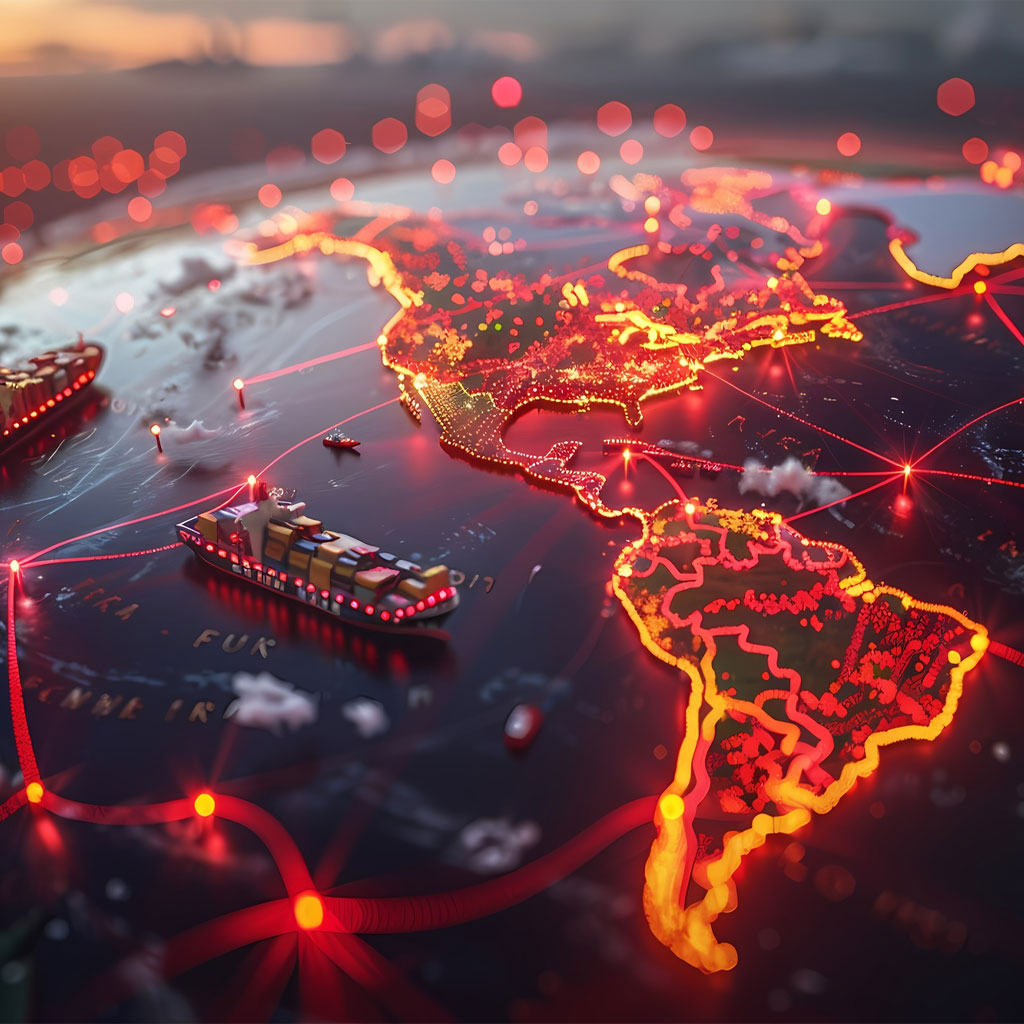
Introduction to Free Trade Zones Worldwide
Introduction to Free Trade Zones Worldwide
1. Introduction
In the era of globalization and the growth of international trade, free trade zones play a significant role in facilitating imports, exports, and economic flow. These special economic areas, often exempt from customs duties or with very low tariffs, enable investment attraction, job creation, and export development. In this article, we provide a comprehensive overview of the concept of free zones, their advantages, global examples, and future outlook.
2. What Are Free Zones?
Free zones are areas where customs and trade laws operate independently of the main territory of a country. In many countries, goods can enter or leave these zones without paying duties. The main goal of establishing a free zone is to reduce trade costs, attract foreign investment, and expand export-oriented production.
3. History of Free Trade Zones
The concept of a free trade zone originated over a century ago but saw significant development after World War II with the rise of international trade. Early examples such as the Djibouti Free Zone and the Helsinki Free Zone in the 1950s are considered pioneers. Since then, the number of free zones worldwide has grown to hundreds, expanding each year to attract multinational companies.
4. Advantages of Establishing Free Zones
Reduced Customs Costs
Goods entering a free zone are often exempt from tariffs or subject to very low duties, which reduces the final cost.
Attracting Foreign Investment
Foreign companies can operate in these zones without high commercial risks and engage in global competition.
Employment Opportunities
Production, packaging, assembly, and logistics services in a free zone help create local employment.
Export Growth
Companies based in free zones usually focus more on exports and have access to international markets.
Advanced Infrastructure
These zones often include port and airport facilities, modern warehouses, and reliable communication networks.
5. Largest and Most Important Free Trade Zones in the World
JAFZA – Jebel Ali Free Zone (Dubai)
One of the largest free zones in the Middle East with over 70,000 active companies and more than $170 billion in annual trade.
Singapore Free Zone (Jurong Island + Changi)
Focused on oil, petrochemical, electronics, and international financial services industries.
China (Shanghai Free Trade Zone)
China’s first free zone aimed at boosting exports and attracting foreign investment.
Busan Free Zone (South Korea)
Specialized in maritime logistics, IT, and automobile production.
Panama Free Zone
Alongside the Panama Canal and maritime transport services, it plays a key role in Central American and international trade.
6. Global Map of Free Zones
Most World Trade Organization member countries host multiple free zones. These areas are widespread across Asia, the Middle East, Europe, Latin America, and Africa. In recent years, countries like Saudi Arabia (NEOM), Oman, Turkey, Egypt, India, and Brazil have heavily invested in the development of free zones.
7. Active Industries in Free Zones
Industries such as automotive manufacturing, electronics, petrochemicals, digital trade, financial services, logistics, and electronic assembly are highly active in free zones. For example, Dubai Free Zone hosts IT companies, startups, and international banking services.
8. Challenges Related to Free Zones
Intense Competition Between Free Zones
To attract investment, a free zone must offer better facilities, low taxes, and transparent regulations.
Complex Regulations
Some countries still lack clear internal and international regulations for free zones, or their processes are time-consuming.
Political and Economic Risks
Changes in tax policies or international relations can negatively impact the profitability of a free zone.
Environmental Concerns
Establishing industrial free zones may harm the environment unless strict controls are implemented.
9. Future Trends and Growth of Free Zones
Global trends show that free zones will continue to expand. Technologies like blockchain for customs transparency, AI for process optimization, and clean energy for environmental sustainability are among the key trends. Additionally, newly industrialized countries like New Zealand, Indonesia, and Turkey are moving toward creating export-driven free zones.
 10. Successful Examples of Countries with Free Zones
10. Successful Examples of Countries with Free Zones
United Arab Emirates
With the creation of free zones like Dubai and Abu Dhabi, the UAE has become an economic hub in the region.
Singapore
By leveraging its strategic location and advanced free zone, Singapore has become a regional trade center.
China
Through the Shanghai Free Zone and others, China has significantly boosted its industrial exports and foreign investments.
Mexico (Merchants Free Zone)
Successfully leveraged international automotive companies like Ford and Carlisle.
11. Role of Free Zones in the International Economy
A free zone acts as a hub for trade networking, goods transit, export-oriented production, and strategic logistics. These areas facilitate trade regulations, reduce supply chain costs, and strengthen global business competitiveness.
12. Key Considerations for Investing in Free Zones
- Review clear laws and tax agreements
- Analyze the target export market
- Consider infrastructure and transportation networks
- Evaluate the political and economic risks of the host country
- Collaborate with active companies in the zone to reduce risk
13. Conclusion
This article provided a comprehensive review of free zones — from definition and history to advantages, global examples, and future prospects. If your goal is to attract investment, boost exports, or access international markets, free zones can be a highly effective solution.
14. Frequently Asked Questions About Free Zones
What are free zones?
Free zones are special areas exempt from or subject to low tariffs, aimed at facilitating trade, attracting investment, and developing exports.
Why are free zones important?
They reduce trade and export costs, attract capital, create jobs, and reinforce an export-oriented economic structure.
Which countries have advanced free zones?
UAE, Singapore, China, South Korea, Mexico, Saudi Arabia, Egypt, and Turkey are among the top examples.
How can I invest in a free zone?
First, review the host country’s laws and conditions, analyze the target market, study infrastructure and competitors, then negotiate with free zone authorities.


